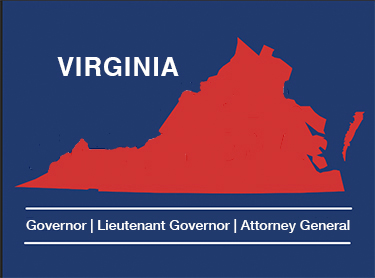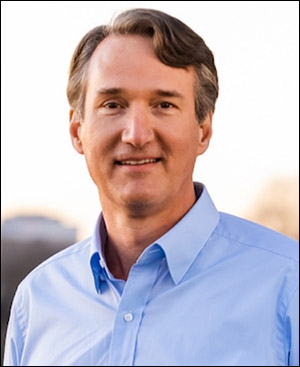By Jim Ellis — Friday, Sept. 12, 2025
Polling
 The L. Douglas Wilder School of Government and Public Affairs at Virginia Commonwealth University just released a new statewide survey that may spur more questions than it answers.
The L. Douglas Wilder School of Government and Public Affairs at Virginia Commonwealth University just released a new statewide survey that may spur more questions than it answers.
The poll (Aug. 18-28; 804 Virginia adults; 764 registered Virginia voters; live interview) finds the Democratic candidates sweeping the Republicans in the three statewide offices of Governor, Lieutenant Governor, and Attorney General. While such a result is certainly conceivable in what has become a relatively reliable blue state, the methodology involved may suggest a high inaccuracy factor.
While the ballot test figures seem to be reasonably in line with regard to the Governor’s race, the Lieutenant Governor and Attorney General conclusions seem a bit out of balance.
In the ballot tests, former Rep. Abigail Spanberger (D) leads Lt. Gov. Winsome Earle-Sears (R), 48-39 percent, state Sen. Ghazala Hashmi (D-Richmond) tops John Reid (R) by a closer 44-40 percent split, and former state Delegate Jay Jones (D) moves ahead of incumbent Attorney General Jason Miyares (R), 46-40 percent.
Republican Lieutenant Governor candidate Reid has largely been abandoned by his party’s leadership. Gov. Glenn Youngkin (R) even tried to remove him from the ticket. Therefore, we see little in the way of campaign activity coming from this GOP nominee. Yet, he is the best performer among Republicans according to this poll.
The person who has typically come forward as the strongest, incumbent Attorney General Jason Miyares, is down beyond the polling margin of error in this VCU study. Other polls have shown the race to be tight, and even with Democrat Jones ahead, but Miyares has been aggressive on the campaign trail and is making a major effort. Therefore, this ballot test result appears at least somewhat surprising.
The poll has methodological flaws. First, the sampling period is a full 10 days, which is much longer than the typical three-day polling period that is the industry standard for live interview surveys. The long sampling period tends to skew final results because the political situation can change in a relatively short number of days.
In a two-question series where respondents are asked with which political party do they identify, 34 percent said Democratic, 33 percent Republican, and 29 percent classified themselves as Independent. This break suggests a skew toward the Republicans because Democratic identification in Virginia, even though it is not a party registration state, should be more robust than leading Republicans by only one preference percentage point.
The follow up question sheds further light upon the party swings. Querying those who called themselves Independents, identified with a minor party, refused to answer the question, or simply said they didn’t know, the pollsters attempted to determine with which party they feel closest. Here, we see a much different split of 38 percent Democratic, 28 percent Republican, and 23 percent saying neither. This corrects the skew of the original question and brings the full electorate’s predisposition into a more realistic perspective.
The poll badly skews toward the older voter. While 29.2 percent of the Virginia population is over 55 years old, in the VCU poll this same age demographic accounts for 55.8 percent of the responses. Thus, despite the Republican candidates performing better with this age segment than their statewide numbers and seeing this demographic account for a strong majority of the responses suggests the weighting factor skewed significantly in favor of the Democratic candidates.
Another skew relates to the income segment. In the survey sample, 48 percent of those answering the income question are in the $100,000 and over range for household income. Approaching 28 percent of the universe responded with over $150,000 annual household income. Yet, the statistics indicate that only 32 percent of Virginia households are actually in this category. The upper income skew within this sample heavily favors the Democratic candidates.
With the election moving quickly into political prime time, we can expect to see a great many new polls released. Understanding the weighting methods of each will help determine a more accurate picture of where the electorate will head on November 4th.

